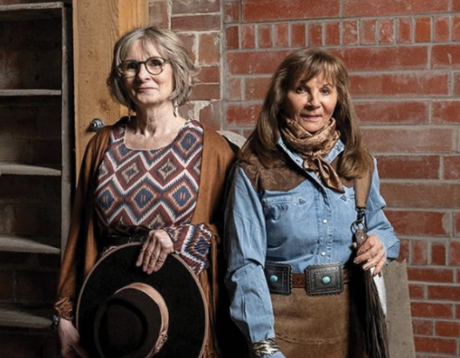Painter John Innes mixed pioneer adventure into his oils
 |
|
Prairie Schooner |
Photos courtesy of Medicine Hat Esplanade Archives
Popularly referred to as the “Remington of the Canadian West” and “the dean of Canadian historical artists,” John Innes is known for his paintings of the early “Pioneer West” of Canada. He was, without a doubt, the nation’s most prolific frontier artist of the early 20th Century.
Born in 1863 in London, Ont., Innes (pronounced Inn-ness) studied in Ontario and in England at Dufferin Military Academy where he excelled in design, drafting and painting.
 |
|
Cowboy Race |
Upon his return to Canada, Innes headed west, blazing a trail ahead of the Canadian Pacific Railway. His artistic ability and adventurous spirit enabled him to join a survey party in the foothills of the Canadian Rockies, where he created maps and sketches with Ross, Mann and Holt.
After several interesting “non-art” careers — most notably, running a ranch in Calgary and working as a correspondent during the Anglo-Boer War (1899-1902) – he drew cartoons for periodicals and later published his own newspaper, Mountain Echoes, in Banff.
 |
|
Making a Brave |
After 12 years in the Rockies, Innes made his way back in Toronto where he worked as a writer and illustrator and exhibited his art.
In 1905, Innes undertook an epic journey, travelling from Ontario to Vancouver by pack train, painting en route. He created an amazing series of frontier scenes depicting the era of Canadian history when the Indian, fur trader and buffalo held undisputed reign before the coming of the wire.
His masterful series of originals, Epic of the West, were exhibited throughout the country and bought by the Hudson’s Bay Company. They now hang in Winnipeg.
 |
|
Fighting the Thunder Bird |
Many of his works are familiar to collectors; Toronto publisher W.G. MacFarlane reproduced some of the original paintings by the tens of thousands as postcards that romanticized life on the Canadian frontier.
Fondly remembered as a true bohemian and frontiersman, Innes once said: “In the cow camps, in the lodges of the long-dead chiefs… on the mountain tops, or out on the Prairies criss-crossed with buffalo trails, I have learned the lore of Western Canada.”
 |
|
Roping Broncos |















